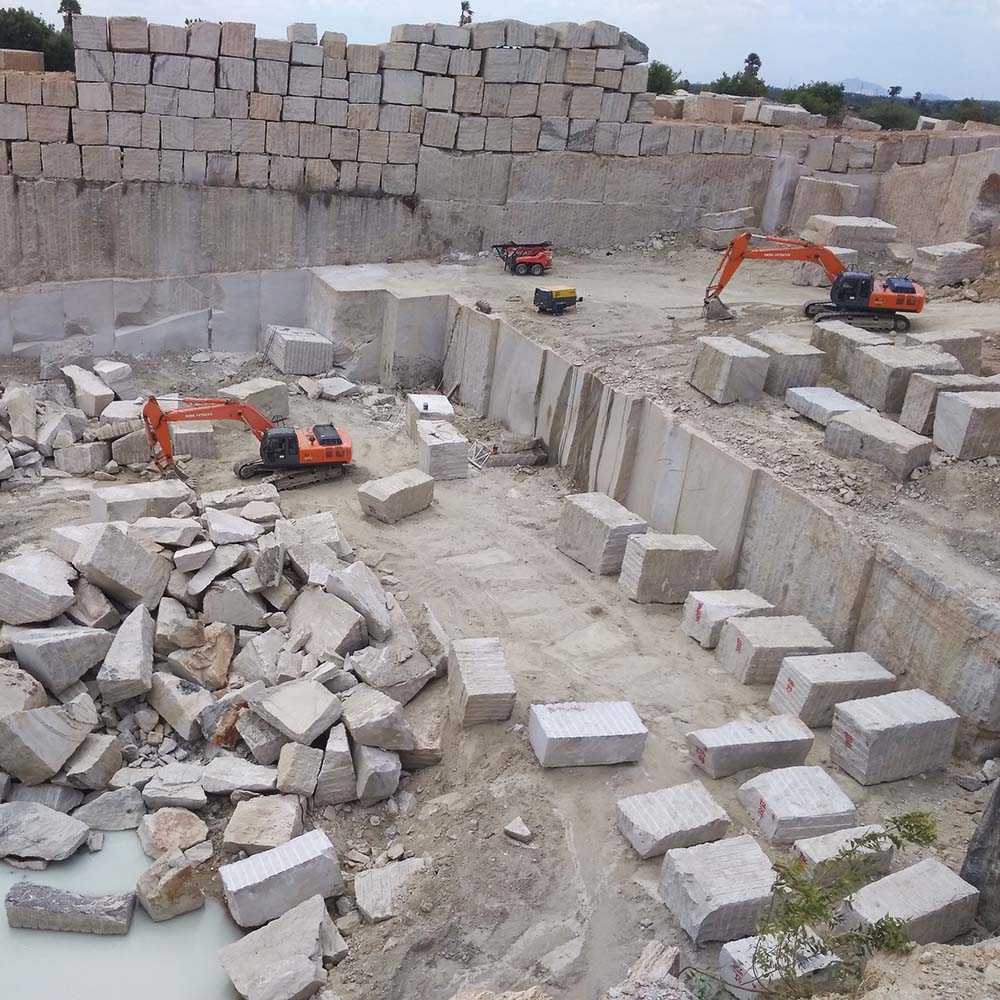Unveiling the Mysteries of Granite Quarrying: Where Stamina and Style Meet
The world of granite quarrying is a realm where the raw stamina of nature merges with human virtuosity to create structures that stand the test of time with an air of sophistication. From the midsts of quarries to the meticulous polishing in workshops, the process of transforming granite right into building wonders is an intricate dancing of tradition and advancement. As we peer right into the midsts of this old craft, we begin to uncover the covert ins and outs that form the really significance of our built environment.
The Origins of Granite Quarrying
In the annals of architectural history, the origins of granite quarrying are shrouded in a tapestry of ancient workmanship and geological marvels. Dating back to ancient Egypt and Mesopotamia, the extraction of granite from quarries marked the beginning of a journey that would ultimately cause the development of several of the globe's most legendary frameworks.
Granite quarrying's origins can be mapped to the skilled artisans that identified the rock's longevity and visual allure. Via a mix of primitive devices and large resolution, these very early quarry workers unearthed granite blocks that would come to be the foundation of human beings.
As human beings advanced, so did the strategies of quarrying granite. The Romans, renowned for their engineering expertise, established sophisticated methods for extracting granite to create monoliths, temples, and roadways that stood the examination of time.
The tradition of these ancient quarrying techniques continues to shape modern-day design, with granite remaining an icon of toughness and beauty in building projects around the world. (granite quarries in south africa)
Tools of the Quarrying Profession
The development of granite quarrying techniques from ancient civilizations to modern-day times highlights the important role played by the devices of the quarrying sell shaping the market's practices. In old times, quarrying tools were primary, commonly containing knives, hammers, and wedges made from materials like bronze or iron. These devices needed substantial manpower and time to remove granite blocks from quarries.

Additionally, the introduction of pneumatic devices and high-powered machinery has considerably decreased the physical labor required in quarrying operations, enhancing employee safety and security and performance. As the quarrying market remains to innovate, the tools of the profession continue to be at the center of driving development and shaping the future of granite extraction.
Extracting Blocks of Granite
Using precision equipment and advanced strategies, the extraction of granite obstructs from quarries has become an innovative process in the modern quarrying sector. Managed blasting methods are then utilized to break apart the granite right into manageable areas.

Sprucing Up and Completing Strategies
To accomplish a flawless surface on granite blocks, proficient craftsmens employ a collection of precise sprucing up and completing techniques. After the preliminary extraction and forming processes, the granite obstructs go through an extensive sprucing up phase to boost their natural elegance and toughness. One common approach used in brightening granite is diamond abrasion, where commercial diamonds are utilized to grind informative post and polish the stone to a smooth coating. This process not only develops a lustrous surface area but likewise makes certain uniformity in shade and appearance across the granite block.
In enhancement to sprucing up, ending up techniques are applied to additional improve the granite's look. These techniques may consist of flaming, sharpening, you can find out more or brushing, each offering distinct structures and surfaces to match various visual choices. Flaming, as an example, involves exposing the granite surface to high temperatures to produce a rough, distinctive surface, perfect for exterior applications where slip-resistance is essential. Developing, on the other hand, offers a matte surface that is smooth to the touch, best for interior counter tops and floor covering. By very carefully picking and using these brightening and completing methods, artisans can transform raw granite blocks into splendid pieces that showcase both strength and elegance.

Environmental Influence and Sustainability
With the growing focus on environmental awareness you can try this out in the sector, granite quarrying methods are significantly scrutinized for their influence on natural deposits and lasting sustainability. Quarrying for granite can have significant ecological effects. The extraction process usually involves making use of hefty machinery, dynamites, and huge amounts of water, causing environment destruction, soil disintegration, and water air pollution. Additionally, the transportation of granite from quarries to processing centers creates carbon emissions, even more adding to ecological degradation. granite quarries in south africa.
To mitigate these effects and make sure sustainability in granite quarrying, market stakeholders are embracing various procedures. Carrying out innovative innovations to decrease energy usage and water usage, recovering quarried land for eco-friendly reconstruction, and promoting liable sourcing techniques are some strategies being used. Qualifications such as the Forest Stewardship Council (FSC) and the Management in Energy and Environmental Style (LEED) aid customers determine environmentally friendly granite items.
Conclusion
Finally, granite quarrying is a process that needs specialized tools and techniques to remove blocks of granite and polish them to a high degree of surface. While the environmental effect of quarrying can be significant, initiatives are being made to improve sustainability techniques in the industry. On the whole, granite quarrying is a delicate equilibrium between using the stamina and style of this natural rock while reducing its effect on the atmosphere.